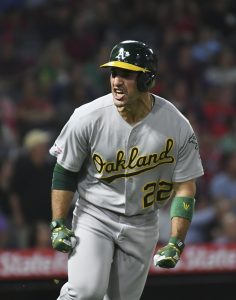3:07pm: The league has announced the suspensions. Cintron’s will begin immediately. Laureano is appealing his suspension, so his punishment will be held in abeyance until the appeals process has been completed.
1:52pm: Laureano has actually received a six-game suspension, Susan Slusser of the San Francisco Chronicle reports (via Twitter).
1:41pm: Major League Baseball will announce that Astros hitting coach Alex Cintron and Athletics outfielder Ramon Laureano have been suspended for their roles in this week’s brawl between the two teams. USA Today’s Bob Nightengale reports that Cintron will receive a 20-game suspension, while Laureano will be suspended for five games (Twitter links). The Athletic’s Ken Rosenthal, meanwhile, tweets that Laureano’s penalty is still being finalized, so the five-game sum may not yet be set in stone. A formal announcement has not been made but figures to follow shortly.
Cintron’s punishment is the largest ever given to a coach. The former big leaguer was seen clearly goading Laureano from the dugout after Laureano took first base following the second time he’d been hit by a pitch in Sunday’s game. Laureano had some choice words for Houston pitcher Humberto Castellanos as he walked to first base but did not initially take any action toward the Astros. Cintron, however, persisted with verbal barbs and took a step toward Laureano, seemingly daring him to engage in an altercation. Laureano eventually lost his cool and gave in to Cintron’s prodding.
The result, of course, was the exact type of situation that Major League Baseball has sought to avoid in the midst of this pandemic-interrupted season: an on-field brawl in which members of both clubs were in direct physical contact — many without a mask or face covering. Houston catcher Dustin Garneau, a former teammate of Laureano in Oakland, quickly tackled him to the ground and said he did so in an effort to diffuse the situation. Other members of both organizations soon pulled the involved parties apart and managed to quell the fracas, but suspensions for Cintron and Laureano, the brawl’s two central figures, have been widely anticipated since the incident.
For the A’s, the loss of Laureano for nearly a week is significant over the course of a shortened season. The former Astros farmhand was acquired at minimal cost following the 2017 season, but he’s blossomed as a star since debuting in Oakland in 2017. A standout defender with a rocket arm, Laureano has also proven a legitimate threat on the bases and at the plate. In 731 career plate appearances, he’s a .286/.351/.507 hitter with 32 home runs and 21 steals. He’s quite arguably out to the best start of his career in 2020, slashing .263/.405/.491 in 74 plate appearances.
Laureano can still appeal the punishment and push for a reduced suspension, which seems likely to be the case. Assuming he’s still suspended at some point, the A’s can turn to Mark Canha again in center field or recall any of Skye Bolt, Luis Barrera or Dustin Fowler from their alternate site.
